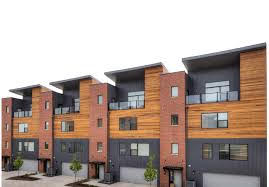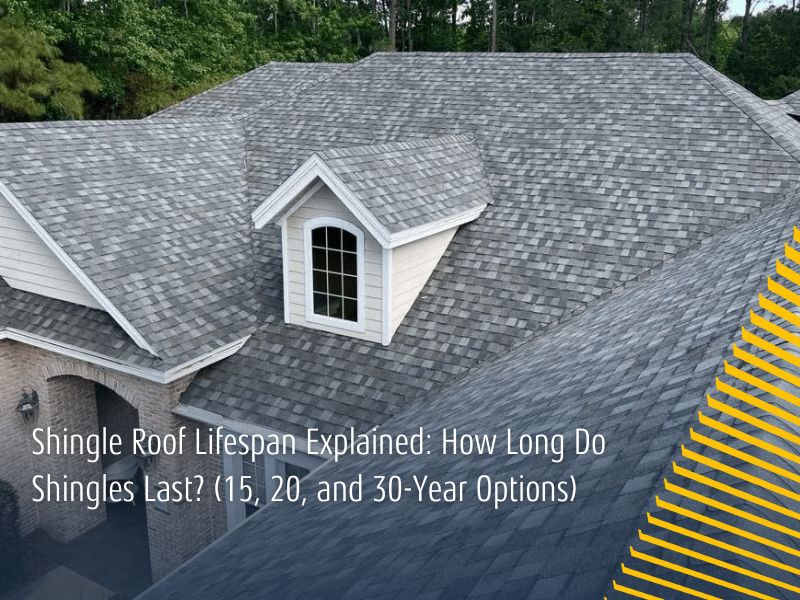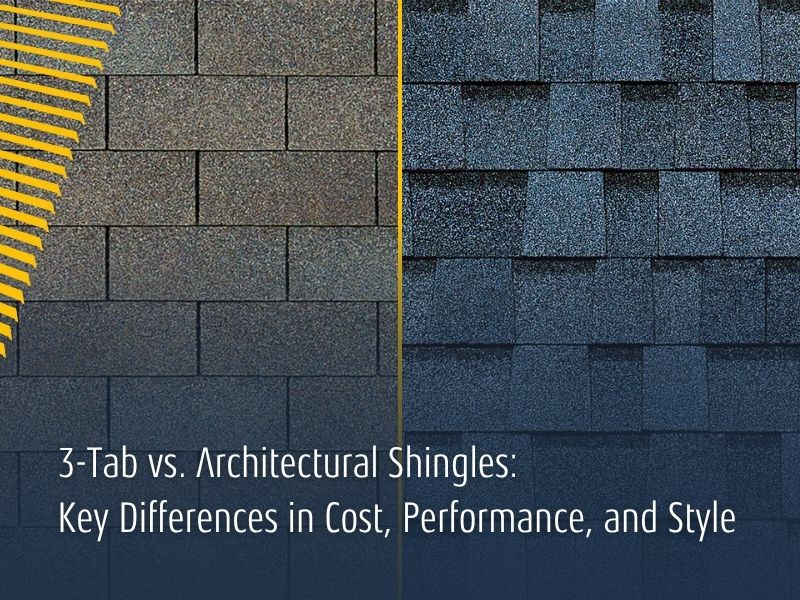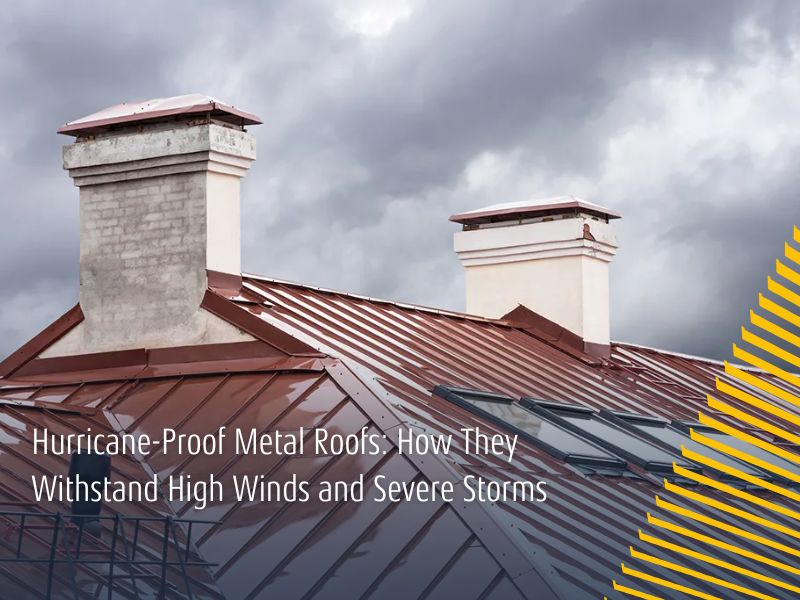Your roof is one of the most important systems protecting your home. For Florida homeowners, the question is not only how long does a roof last but also how long will it withstand the state’s unique challenges, sun, storms, humidity, and salt air? Understanding the lifespan of different types of shingles, how climate factors affect durability, and when to schedule a replacement helps you make smarter financial decisions and avoid costly damage.
This article explains the life expectancy of common shingles, compares 15, 20, and 30-year options, and explores the signs that tell you it is time to replace your roof. You will also learn how to protect your home through proactive maintenance and how SmartPRO Roofing’s SmartQuote tool gives Florida homeowners exact pricing online, saving 20% or more on average by eliminating the salesperson and putting you in control of the process.
What is the average lifespan of a shingle roof?
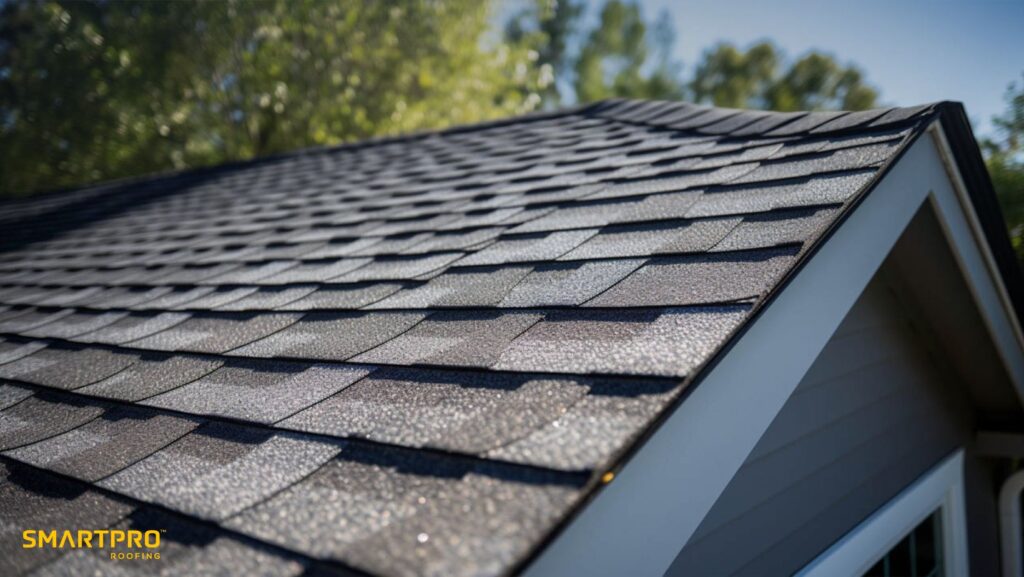
The average lifespan of a shingle roof depends on the type of shingle you choose, the installation quality, and the conditions it is exposed to over time. In general:
- Three-tab asphalt shingles last 15 to 20 years under normal conditions.
- Architectural asphalt shingles can last 25 to 30 years.
- Premium asphalt or composite shingles may last even longer, especially when installed properly and maintained well.
However, those numbers are based on controlled testing. In real-world Florida weather, where UV rays are intense, storms are frequent, and humidity is constant, shingles often fall short of their rated life. A roof advertised as “30-year” may last 20 to 25 years here, while a “20-year” shingle could show signs of aging in just 15 years.
This is why Florida homeowners should think of lifespan ranges as guidelines rather than guarantees. Local conditions, roof slope, attic ventilation, and drainage all influence the actual service life of your roof.
How long do 15, 20, and 30-year shingles really last?
Shingle ratings give a general idea of durability, but they do not account for Florida’s climate. Three-tab shingles, the most affordable option, usually reach the 15–20 year range only in mild conditions. In Florida, their actual lifespan is often closer to 12–15 years.
Architectural shingles, also called dimensional shingles, have a thicker profile and stronger asphalt composition. These are the most popular choice for Florida homeowners seeking a balance of affordability and longevity. Under normal conditions, they can last up to 30 years, but in Florida’s coastal environment, a realistic expectation is 20–25 years.
Premium or “30-year” shingles sometimes promise decades of service, but in practice, even they can fall short of the full rating when exposed to UV, hurricanes, and constant humidity. A good rule of thumb is that shingles last about 80% of their advertised life in Florida’s climate.
That is why SmartPRO recommends regular roof inspections after 12–15 years, no matter which type of shingle you install.
What factors affect the lifespan of a roof in Florida?
Several environmental and structural elements determine how long a roof truly lasts. These include:
- Climate exposure: Intense UV rays dry out asphalt, while heavy rains and salt air corrode materials faster.
- Hurricanes and tropical storms: High winds can lift shingles or break the sealant strips holding them down.
- Roof slope and drainage: Flat or low-pitched roofs retain more water, which accelerates wear.
- Attic ventilation: Poor ventilation traps heat and moisture, leading to warped decking and shortened shingle life.
- Foot traffic: Walking on the roof can crack shingles or loosen granules, reducing durability.
The roof deck underneath also plays a role. If decking warps, softens, or deteriorates from moisture, it can compromise the entire system even if the shingles themselves look intact.
Because so many factors affect longevity, homeowners should focus less on the advertised lifespan and more on how well the roof is maintained and inspected over time.
How do different shingle types compare?
Shingles remain the most common roofing material in the U.S. because they are affordable, versatile, and widely available. But not all shingles are created equal.
- Three-tab shingles are economical but thinner, making them more vulnerable to wind and impact damage.
- Architectural asphalt shingles are layered, giving them greater depth, weight, and resistance to weathering.
- Composite shingles are engineered from advanced materials to mimic slate or cedar while delivering better durability.
- Cedar shake shingles offer a natural aesthetic but require ongoing maintenance in Florida’s humid environment.
- Metal shingles provide excellent longevity, often lasting up to 50 years, though they come with a higher initial cost.
For most Florida homeowners, architectural asphalt shingles strike the best balance of cost, durability, and curb appeal. They are also widely available with impact and wind resistance ratings that suit hurricane-prone areas.
When is the right time to replace your roof?
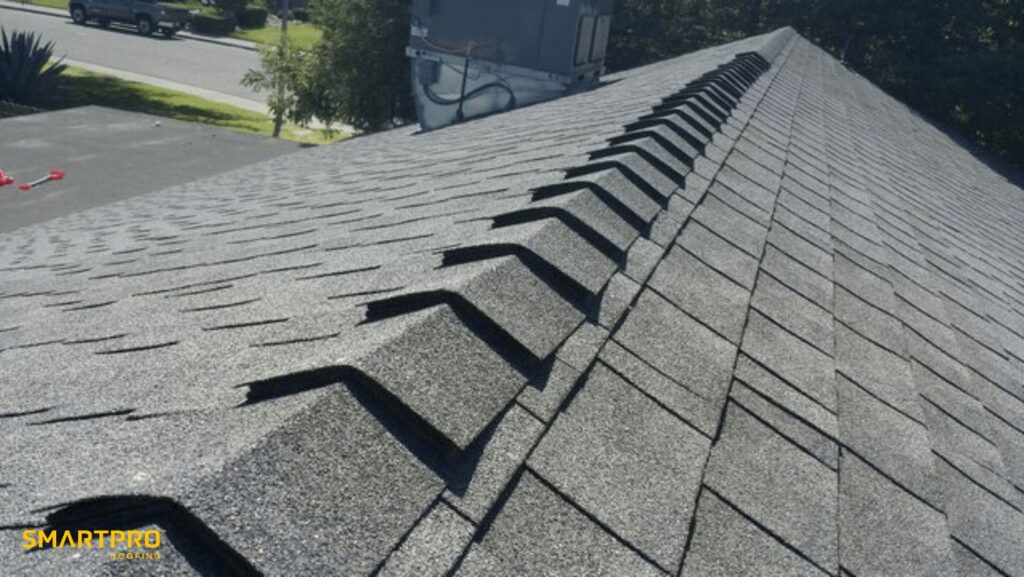
Knowing the right time to replace your roof prevents expensive water damage inside your home. Warning signs include:
- Curling, cracked, or missing shingles
- Granules accumulating in gutters or bald spots on shingles
- Persistent leaks in the attic or water stains on ceilings
- Loose shingles after storms
- Shingles that have simply reached their expected lifespan
If you notice any of these issues, it is safer to plan a replacement rather than delay. Small roof leaks can quickly escalate into structural damage to the decking, insulation, and interior of your home.
SmartPRO’s SmartQuote tool makes planning easier by giving you an exact replacement cost instantly. No sales calls, no waiting days for an estimate. Just a clear number you can trust.
How does maintenance extend shingle life?
Routine roof maintenance is one of the best ways to maximize shingle life. Some essential steps include:
- Clearing gutters and downspouts to ensure proper drainage
- Inspecting flashing, vents, and roof edges for leaks
- Checking the attic for ventilation issues or water stains
- Scheduling annual inspections with a professional roofing contractor
By catching issues early, such as loose shingles or small leaks, you prevent bigger problems and help your roof last closer to its rated lifespan. Florida homeowners who stay proactive with inspections often enjoy several extra years of service compared to those who wait until damage is visible.
How do roofing materials influence longevity?
The type of roofing material you choose sets the baseline for how long your roof will last:
- Asphalt shingles: 15–30 years, depending on type
- Metal roofs: Up to 50 years with proper care
- Clay or slate roofs: Up to 100 years, though they are heavy and expensive
- Composite shingles: Designed for durability and often outlast asphalt
In Florida, metal and tile roofs are popular for coastal homes because of their long service life and resistance to salt air. However, architectural shingles remain the most common choice for affordability.
Selecting the right material means balancing upfront cost, durability, and the specific challenges of your location.
What are the warning signs your shingles need to be replaced?
A roof does not fail overnight, it shows signs of deterioration along the way. Some red flags include:
- Edges curling or cracking
- Granule loss creating bald spots
- Water stains in your attic
- Repeated repairs in the same areas
- Layers of shingles deteriorating or becoming loose after storms
If your roof is past 15 years old and showing multiple issues, it is usually more cost-effective to replace it than to keep repairing.
How do shingle lifespans compare to other roofing types?
When evaluating roofing options, it is important to compare life expectancy:
- Three-tab asphalt shingles: 15–20 years
- Architectural asphalt shingles: 25–30 years
- Composite shingles: 30+ years depending on brand
- Metal roofs: Up to 50 years
- Clay and slate roofs: 75–100 years
Asphalt shingles remain the most affordable upfront but have the shortest lifespan. Metal and tile offer decades more durability but come with a higher installation cost. For Florida homeowners who want a balance, architectural shingles often provide the best return on investment.
Why should Florida homeowners inspect their roof regularly?

Florida’s climate makes annual roof inspections non-negotiable. High humidity promotes mold, storms create hidden damage, and salt air accelerates wear. A yearly inspection ensures issues are addressed before they lead to major leaks.
It is also smart to schedule a roof check after major storms. Even if shingles appear intact from the ground, sealant strips may have loosened or flashing may have shifted. Catching these problems early saves thousands in potential repair costs.
The Department of Energy and Environment also recommends roof inspections as part of a broader energy efficiency plan, since proper ventilation and insulation extend both roof life and reduce energy costs.
Summary: Key points to remember about shingle roof lifespan
- Shingle roofs in Florida rarely reach their full rated lifespan due to climate conditions.
- Three-tab shingles last 12–15 years in Florida, while architectural shingles often last 20–25.
- Signs it is time to replace include curling, missing shingles, granule loss, and persistent leaks.
- Regular inspections and maintenance extend roof life and prevent costly structural damage.
- Metal and tile roofs last longer but cost more upfront.
- SmartPRO Roofing helps Florida homeowners save 20% or more on average with exact online pricing through SmartQuote.
Get started with your roof today
Ready to see exactly what your new roof will cost and buy it entirely online without the sales pitch? Get your free SmartQuote today in just minutes with SmartPRO Roofing and start saving an average of 20% or more on your roof replacement.




